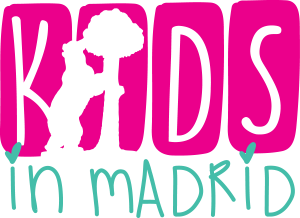 All credit for the resounding success of the bilingual program and of kids learning Science in English must go to the teachers. Although they all receive a few hours of language support from native English-speaking classroom assistants, it is the teachers and not the assistants that hold the key to success. Spanish primary teachers have been given training based on CLIL (Content Language Integrated Learning) that has taught them how to use English as another learning tool. In the classroom Spanish primary teachers are explaining the subject in a way that encourages active listening, verbal skills, repetition and experiments as well as working with textbooks and the interactive whiteboard. Our teachers deserve a sincere round of applause for all their hard work and effort. Thank you!
All credit for the resounding success of the bilingual program and of kids learning Science in English must go to the teachers. Although they all receive a few hours of language support from native English-speaking classroom assistants, it is the teachers and not the assistants that hold the key to success. Spanish primary teachers have been given training based on CLIL (Content Language Integrated Learning) that has taught them how to use English as another learning tool. In the classroom Spanish primary teachers are explaining the subject in a way that encourages active listening, verbal skills, repetition and experiments as well as working with textbooks and the interactive whiteboard. Our teachers deserve a sincere round of applause for all their hard work and effort. Thank you!
Spanish children no longer learn subjects by rote and primary education has evolved to the extent that science can, indeed, be taught successfully in a foreign language. CLIL classes combine experiments, dialogue, audiovisual tools, reading comprehension and commonsense to make science make sense.
In order to understand how CLIL works I contacted Inés Delgado-Echagüe who works as a teacher trainer for CLIL and also created the first synthetic phonics method for young EFL learners (Yo-yo phonics). For a full explanation of CLIL please look at her website, in English, which provides a thorough guideline to parents interested in learning the mechanics of CLIL Cliphonics. In brief, CLIL can be explained as follows:
a) Ready, steady, go!
 It goes without saying that in the same way that reading skills are required for problem-solving in mathematics, it is impossible to follow a subject in English without being familiar with the language. In infant school Spanish children begin to learn how to read English following carefully adapted programs that provide them with the necessary skills to enter bilingual primary education.
It goes without saying that in the same way that reading skills are required for problem-solving in mathematics, it is impossible to follow a subject in English without being familiar with the language. In infant school Spanish children begin to learn how to read English following carefully adapted programs that provide them with the necessary skills to enter bilingual primary education.
b) Teacher knows best!
Teachers are masters of their trade. They know how to explain concepts; they are skilled at educating our children. Therefore as parents we must trust that the teacher knows best when it comes to the bilingual program. Inés believes that the most successful bilingual schools are those that respect their teachers’ criteria, allowing them to use Spanish on occasion to assure that every student in the room has understood the concept being taught. This doesn’t mean that subjects taught in English such as Science become translation classes. Rather, it means that common sense rules and a good teacher will use all of his or her skills (including the native language) to ensure that the message has been understood.
c) Do you understand?
Inés Delgado-Echagüe is adamant that it is a mistake to give Spanish children Science textbooks until they know how to read English. I can’t help agreeing with her. I know that in many cases Spanish children are barely using the Science textbooks that their parents bought them at the start of the academic year because they don’t, yet, understand what they say. The only schools that make the most of primary school Science textbooks in English are those that have taught Yo-yo phonics in Infant school and continue to provide phonics classes alongside CLIL subjects during Primary.
At the end of the day, Inés concludes that the bilingual element of primary education has the greatest chance of succeeding when all teachers involved work on a combined syllabus. Bearing in mind the objective – that Spanish children learn science properly – this can only be reached if the subject level isn’t watered down in order to make sense in a foreign language, and if our children are taught the same concepts in their native tongue too.
Congratulations teachers! No more education cuts!
Take a look at the Education section of our blog to find information on different courses and activities for kids.
